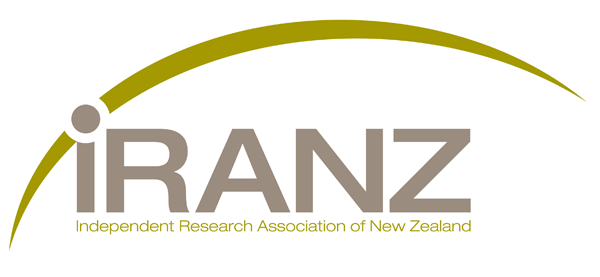|
|
|
|
|
|
|
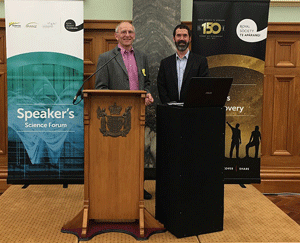 |
At the Beehive - Lincoln Agritech's Precision Agriculture Group Manager, Dr Armin Werner, left, with Lincoln University Bio-Protection Research Centre's Director, Prof Travis Glare. Photo credit: Roger Williams, Plant and Food.
|
“Production, protection and adding value” was the theme for April’s Speaker’s Science Forum. Presenters included Lincoln Agritech’s Group Manager of Precision Agriculture, Dr Armin Werner, and Lincoln University Bio-Protection Research Centre’s Director, Prof Travis Glare.
Dr Armin Werner delivered a presentation titled, “Looking into grape vines: science and technology for early stage prediction of grape yield in the vineyard”. The presentation gave an overview of one of Lincoln Agritech’s MBIE-funded research programmes – A sensor- and model-based analyser for block-scale grape yield prediction. This innovative system, co-funded by New Zealand Wine, uses non-invasive sensing techniques that combine machine vision, microwaves and probability-based bio-economic models to count and predict future fruit yield.
MORE →
|
|
|
|
|
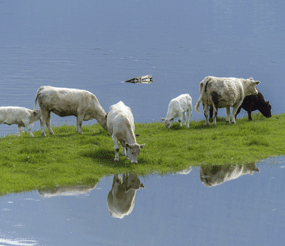 |
|
|
This year’s bill for climate-related disasters in New Zealand has already climbed to $174.7 million, according to the insurance industry. The Whakatane District Council is currently applying to purchase 34 properties in Matata, because it says they are at risk of debris flows in heavy downpours. When it comes to communities exposed to climate-related risk where does responsibility lie?
Suzi Kerr, Senior Fellow at Motu Economic and Public Policy Research, is coordinating the Impacts and Implications programme for the Deep South National Science Challenge. The aim of this science challenge is to understand the potential impacts and implications of climate change for New Zealand in order to support planning and decision-making, and aid adaptation efforts.
MORE → |
|
Flooding has become an increasing climate-related problem. |
|
|
 |
|
Following the successful recruitment of patients through a pharmacy network for a Medical Research Institute of New Zealand (MRINZ) cold-sore study, the institute is now set to formally launch its Pharmacy Research Network (PRN) towards the end of the year.
Recognising the need for cost effective, but robust randomised controlled trials in the New Zealand biotech sector, MRINZ has spent the last two years evolving its novel methodology within a 950-person study of cold sores in collaboration with the Bay of Plenty’s Honeylab.
The expansive network of 50 pharmacies, from Kerikeri to Invercargill, provides a unique clinical interface to recruit, enrol, randomise, and dispense investigational products to participants.
MORE →
|
|
Image: The Pharmacy Research Network, MRINZ. |
|
|
|
|
|
As part of the National Science Challenge spearheaded by BRANZ, Building Better Homes, Towns and Cities, several IRANZ members have recently published research to help make our living environments a better place.
In the wake of the devastating Christchurch earthquakes, Opus Research has been investigating how to rebuild great neighbourhoods. Meanwhile, Motu Economic and Public Policy Research have worked out how to place a value on sunshine.
|
| MORE → |
|
 |
|
New Regent Street in Christchurch now draws locals and tourists. Photo: Opus Research. |
|
|
|
|
|
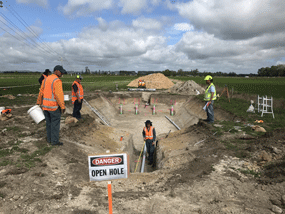 |
|
|
Lincoln Agritech and AquaLinc Research are currently working with ESR on a three year science project in the Hauraki Plains. The project, as part of the larger “Enhanced Mitigation of Nitrate in Groundwater” programme, is investigating using a woodchip denitrifying bioreactor to reduce nitrate loads from pastoral lands.
Approximately 40% of dairying land consists of poorly drained soils. Artificial drainage is essential, but surface and subsurface water drains contribute to fast and non-attenuated nutrient transfers to streams and rivers. This bioreactor project aims to study and reduce the nitrate discharge.
MORE → |
|
Preparing a test woodchip denitrifying bioreactor to reduce nitrate loads from pastoral lands. Photo: Lincoln Agritech. |
|
|
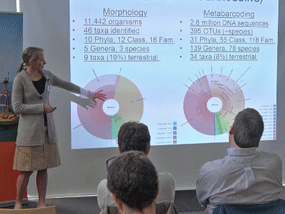 |
|
A new technology with the ability to revolutionise the detection of invasive marine pests in New Zealand waters is now being trialled at 14 laboratories around the world.
The global experiment follows an international workshop attended by 30 experts from 16 research organisations, keen to work out how to apply the technology which will speed up identifying invasive marine species.
MORE →
|
|
Cawthron scientist Susie Wood presenting to fellow researchers at an international workshop. Photo: Cawthron Institute. |
|
|
|
|
|
|
New Zealand has abundant freshwater, on an average annual basis. However, water demand has grown, in many areas, to the point where shortages occur because the spatial and temporal patterns of supply do not match demand patterns.
Aqualinc Research is developing a new framework for sustainable water allocation management that combines statutory planning with market-based mechanisms. The core paradigm shift is moving from effects-based management of an unlimited resource to value-based management of a capacity constrained resource.
|
| MORE → |
|
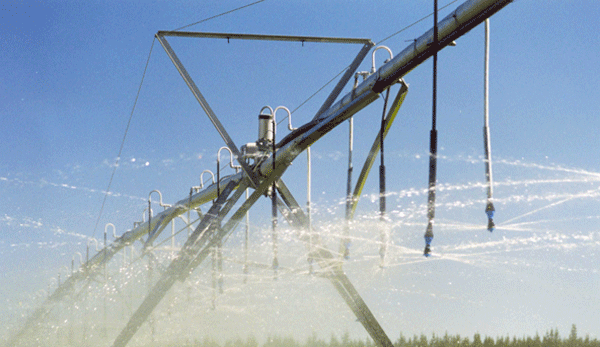 |
|
Aqualinc Research is developing a new framework for sustainable water allocation management. Photo: Aqualinc |
|
|
|
|
|
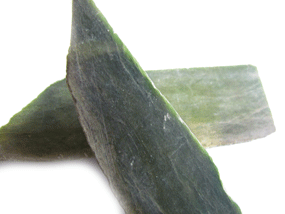 |
|
|
New Zealand pounamu or greenstone is a rare and precious resource that is highly valued for its strength and beauty. Pounamu has been the basis of extractive and manufacturing industries and trade for over 700 years and now creates export value through the tourism sector. The sector however suffers from theft, fake pounamu, and poor utilisation rates.
The Ngāi Tahu are the kaitiaki (guardians) of authentic New Zealand pounamu. IRANZ member CRL Energy is collaborating with Ngāi Tahu, through the Ngāti Waewae hapu, to bring the pounamu industry and minerals research community together.
MORE →
|
|
New Zealand pounamu or greenstone is a rare and precious resource that is highly valued for its strength and beauty. Photo: Louise Thomas. |
|
|
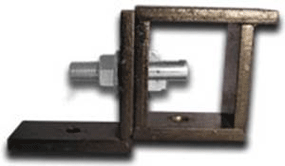 |
|
|
The media has been rife with stories of non-compliant steel, where it has either performed poorly or been utilised despite its inability to meet New Zealand standards.
Not surprisingly, this has become a key concern for many local structural engineers who are sourcing structural components from overseas. There is not only the safety issue in regards to the component’s performance, but also the negative association for a business if it’s found to be anything but right. To help make sure it’s right, HERA, as a member-owned research association, is stepping up to offer independent verification of critical steel components, whether it’s a giant structural beam or a tiny bolt.
MORE →
|
|
These blind bolts can be fitted blind into a hole as they don’t need another nut put into place, they have also been verified as industry-compliant. Photo: HERA. |
|
|
|
|
|
|
Our knowledge of leather tanning is currently flawed according to LASRA scientist Dr Sujay Prabakar. Dr Prabakar has been researching the tanning process in leather. In a first-of-its-kind in-situ experiment, Dr Prabakar used the Australian Synchrotron to measure the effect of tanning on the structure of leather in real time to improve our understanding of how chrome and other tanning agents interact with the leather’s collagen network during processing.
|
|
MORE →
|
|
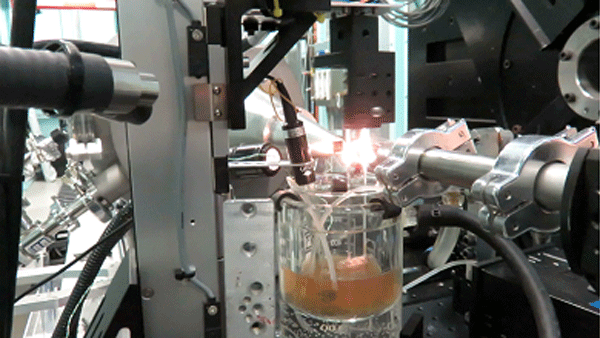 |
|
The specially designed experimental set-up for measuring the tanning process in real time using the Australian Synchrotron’s X-ray beamline and detector. Photo: LASRA. |
|
|
|
|
|
It's been a year of accolades for Cawthron Senior Scientist Dr Lesley Rhodes. Dr Rhodes received a Companion of the New Zealand Order of Merit (CNZM) for services to science and marine farming in the Queen's Birthday honours in June, followed by the inaugural Ministry for Primary Industries (MPI) Award for Significant Contribution to Food Safety in July.
The science community has also showed their appreciation for Dr Rhodes earlier this year by naming a newly-discovered species of dinoflagellate after her - the Ostreopsis rhodesae.
On receiving the CNZM honour, Dr Rhodes said it was a tribute to the Cawthron team. "The research I'm involved in brings together scientists with expertise in many different fields so any successes for our 'Seafood Safety' programme are a joint effort."
MORE →
|
|
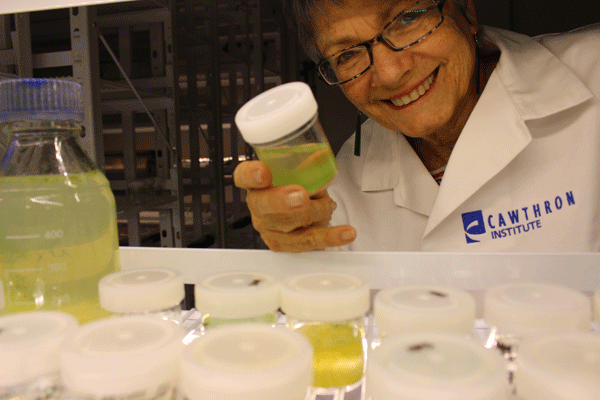 |
|
Dr Lesley Rhodes. Photo: Cawthron Institute.
|
|
|
|
|
|
|
|
WHO WE ARE
IRANZ is an association of independent research organisations. Its members undertake scientific research, development or technology transfer. Members include Aqualinc Research Ltd, BRANZ, Cawthron Institute, CRL Energy Ltd, Heavy Engineering Research Association (HERA), Leather & Shoe Research Association (LASRA), Lincoln Agritech Ltd, Medical Research Institute of New Zealand, Motu Economic and Public Policy Research, Opus Research, Titanium Industry Development Association Ltd (TiDA Ltd) and Transport Engineering Research NZ Ltd (TERNZ).
|
|
Contact: Dr Rob Whitney, Executive Officer, mobile: +64 27 2921050, email: information@iranz.org.nz
|
| Copyright © iranz |
|
|
|
|
|












